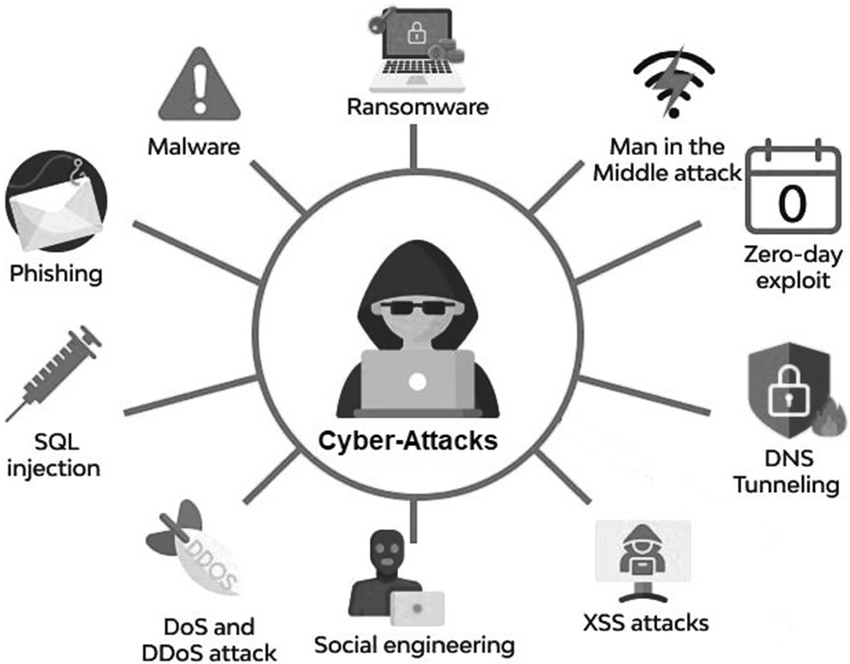Introduction
In the digital age, the landscape of cyber threats is continually evolving, posing significant risks to individuals and businesses alike. Understanding these common threats and knowing how to protect against them is crucial for maintaining security and safeguarding sensitive information. This blog will explore some of the most prevalent cyber threats today and provide actionable steps to protect against them.
Common Cyber Threats
- Phishing AttacksOverview: Phishing involves deceptive emails, messages, or websites designed to trick individuals into revealing sensitive information such as passwords, credit card numbers, or personal data. Example: A recent phishing campaign impersonated Microsoft, sending emails with links to fake login pages to steal credentials. Protection:
- Verify the sender’s email address.
- Avoid clicking on suspicious links.
- Use email filtering and anti-phishing tools.
- RansomwareOverview: Ransomware is malicious software that encrypts data on a victim’s system, demanding payment for the decryption key. It can cripple businesses by locking access to critical data. Example: The WannaCry ransomware attack affected over 200,000 computers across 150 countries, causing widespread disruption. Protection:
- Regularly back up data.
- Keep software and systems updated.
- Use robust antivirus and anti-ransomware solutions.
- MalwareOverview: Malware is any software intentionally designed to cause damage to a computer, server, client, or computer network. It includes viruses, worms, Trojan horses, and spyware. Example: The Emotet malware, initially a banking Trojan, evolved into a versatile threat delivering other malware payloads. Protection:
- Install and update antivirus software.
- Avoid downloading software from untrusted sources.
- Keep operating systems and applications patched.
- Denial of Service (DoS) AttacksOverview: DoS attacks aim to make a machine or network resource unavailable to its intended users by overwhelming it with a flood of illegitimate requests. Example: The 2016 Dyn attack, a massive DDoS attack, brought down major websites like Twitter, Reddit, and Netflix. Protection:
- Use anti-DDoS protection services.
- Implement network security measures like firewalls and intrusion detection systems.
- Employ rate limiting and traffic analysis tools.
- Man-in-the-Middle (MitM) AttacksOverview: MitM attacks occur when a malicious actor intercepts and potentially alters communication between two parties without their knowledge. Example: Attackers compromised unencrypted Wi-Fi connections to intercept sensitive data transmitted over the network. Protection:
- Use encryption protocols like HTTPS and SSL/TLS.
- Avoid using public Wi-Fi for sensitive transactions.
- Implement strong authentication methods like two-factor authentication (2FA).
- Password AttacksOverview: These attacks involve attempts to obtain or bypass passwords used to gain unauthorized access to systems. Common methods include brute force, dictionary attacks, and credential stuffing. Example: The LinkedIn data breach exposed millions of user passwords, which were then used in subsequent attacks. Protection:
- Use strong, unique passwords for different accounts.
- Enable two-factor authentication.
- Regularly update passwords and monitor for breaches.
How to Protect Against Cyber Threats
- Educate and Train Employees:
- Conduct regular cybersecurity training sessions to help employees recognize and respond to potential threats.
- Encourage a culture of security awareness within the organization.
- Implement Strong Security Policies:
- Develop and enforce comprehensive security policies covering password management, data protection, and acceptable use.
- Regularly review and update policies to address new threats.
- Use Advanced Security Technologies:
- Deploy firewalls, intrusion detection systems, and endpoint protection solutions.
- Implement encryption for sensitive data in transit and at rest.
- Regularly Update and Patch Systems:
- Ensure all software, applications, and systems are regularly updated with the latest security patches.
- Conduct vulnerability assessments to identify and address potential security gaps.
- Conduct Regular Security Audits:
- Perform periodic security audits and penetration testing to evaluate the effectiveness of security measures.
- Address any identified vulnerabilities promptly.
- Backup Data:
- Regularly back up critical data and store backups securely.
- Test backup and recovery processes to ensure they function correctly.
Conclusion
Understanding common cyber threats and implementing robust security measures is essential for protecting sensitive information and maintaining operational integrity. By staying informed about the latest threats and adopting best practices in cybersecurity, individuals and businesses can mitigate risks and defend against potential attacks. Remember, cybersecurity is an ongoing process that requires vigilance, education, and the right tools to stay ahead of evolving threats.

